Mission possible
Side Dish interviews prolific Food Network chef Robert Irvine ahead of his C. Springs visit + more food & drink news
Food Network’s Restaurant: Impossible Chef/Host Robert Irvine will be in Colorado Springs on Friday, Sept. 1 (tomorrow) to participate in Mt. Carmel Veterans Service Center’s 8th annual Patriot Day Give Back. Prior to the food distribution effort, “to support those who’ve served us,” Irvine will speak at an honorary ceremony that begins at 8 a.m. (Not open to the public.)
There, after a short speech, Irvine will ring an honor bell — a bronze bell cast with memorabilia from Colorado veterans. Irvine is a self-described “tireless philanthropic supporter of our nation’s military,” in addition to his other high-profile work. “For his charitable work and service on numerous USO tours, Robert is the recipient of several civilian honors, including Honorary Chief Petty Officer of the United States Navy, and the Medal of Honor Society’s Bob Hope Award,” according to his online bio.
Not to detract in any way from that somber and important ceremony — which honors September 11 victims and fallen soldiers: But since Irvine’s heading into town — back into town actually since he was here in Season 19 to help save Momma Pearl’s Cajun Kitchen — I was able today to land the first local interview with him.
Rather than ask broader questions about the TV show and his many other efforts (as he’s also an author, restaurateur, product developer, etc. etc.) I wanted to take the opportunity to get Irvine’s expert opinion on matters affecting Colorado Springs’ food scene specifically. Glean his expertise given his extensive travels and insider knowledge. Here’s the full Q&A:
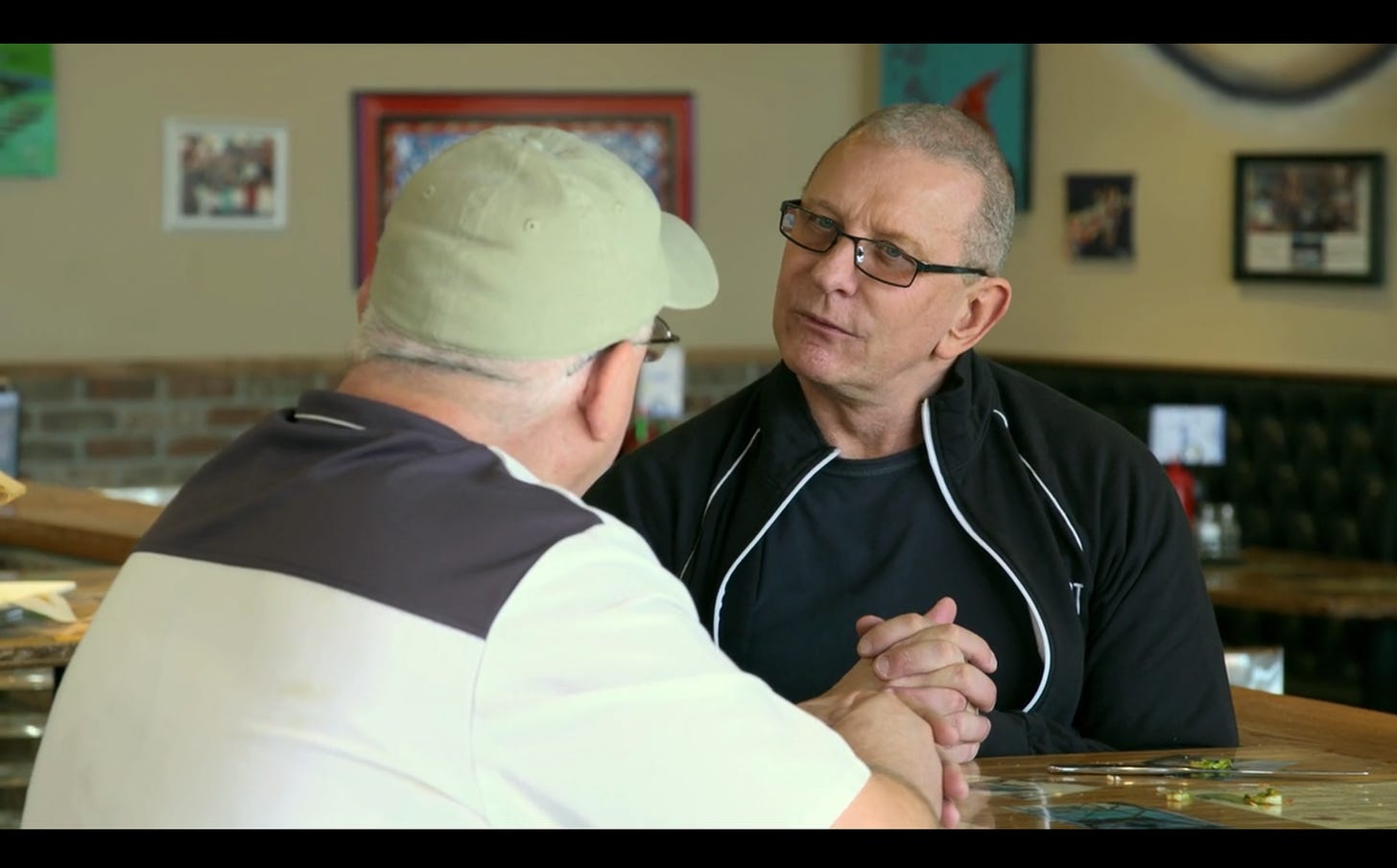
Schniper: We’re in a mid size, rapidly growing city that has a little-sister complex to Denver. We also face factors like pressure from an influx of chain restaurants as well as military migration (loss of steady clientele). There’s a general sense among foodies and some folks in the industry that middling — being just okay — is good enough. But other industry folks push back, trying to elevate our scene and not just follow in the footsteps of others, 5-10 years later, as trends go. They want to create a standard of excellence here. Based on your extensive work around the country helping restaurants improve, how would you advise those trying to drive our scene forward to begin, and break through?
Irvine: I would perhaps begin by dispensing with the pretense that chain restaurants are, by definition, a lower form of the craft. I think fine dining establishments can get themselves on bad footing right at the outset with that attitude. I cannot possibly tell you — because I have lost count — of how many restaurant owners I’ve met, who, when telling me about their failed venture, begin with some nonsense about how the community wasn’t ready for them, or how the residents only wanted TGI Friday’s because they’re a bunch of yokels and they don’t know any better. It’s not just snooty and an embodiment of the worst stereotypes of our industry, it is, flat-out, an abdication of responsibility. If the people you intend to serve are currently flocking to TGI Friday’s, maybe compete with them? Maybe do some of what they do but better? Maybe promote and run specials to counter theirs? I don’t say any of this to suggest that restaurateurs abandon their vision and go for the lowest common denominator. I’m saying nothing of the sort. But I think if you’re outside of a densely-populated city — a culinary powerhouse like New York or Paris — there are a few more parameters that you have to work with, and that begins with local taste. You have to know who you’re serving and what they want, and it’s not their fault if it doesn’t land with them. Speaking for myself, I’m an old-school pub guy. I’m relatively simple. Go into my restaurant and you’ll find a lot of those simple comfort foods, that yes, I have “elevated” with the knowledge and experience I’ve gained in my world travels. It’s both personal and true to me, but there’s a big market for it. Compare my menu with that of a big chain: I have wings, burgers, all that stuff, so the guy who wanders in off the street — the guy who was maybe hoping there was a TGI Fridays around the corner — he’s not going to be intimidated, but when his plate arrives, he’s going to know it’s special, and different, worth remembering, worth telling people about. So, I don’t know if I got too far away from the root of your question, but if I had to boil it down to a sound bite, I would say you have to know exactly who you’re serving, what they want, what they’re used to — and express your vision on those terms.
Schniper: Post-pandemic, with inflation concerns (Colorado ranked #1 in the U.S. recently for restaurant inflation) plus ongoing labor problems (both in hiring and retention, but Colorado recently adjusted around minimum wage increases, $10.63/hr for tipped employees, plus paid sick time and 401(k) offerings) … restaurants seem to be facing more challenges now than ever before. Is that what you’re hearing/seeing across the country, as well? And in the face of those external forces they can’t control, what can they still control to work towards sustainable margins and longevity?
Irvine: It’s an existential threat to the industry. It has always been incredibly difficult to find good people and keep them. That is a constant of the industry. What is new is the skyrocketing cost of labor, which we then have no choice but to pass onto the consumer, who, consequently will then dine out less frequently. It’s a vicious cycle and establishments that, in any other time, ought to be thriving, are instead struggling. That’s what brought me to partner with GRUBBRR. This is a company that, in my estimation, possesses the best solution to the problem. Go into a McDonald’s or Taco Bell today and what do you see? Fewer associates at the register, more self-serve kiosks. The savings are obvious, but you say, “Well, those are corporate behemoths. They can afford that investment.” Wrong. Everyone can afford it. In fact, I’m adamant that you can’t afford not to invest in it. GRUBBRR not only provides the self-serve kiosks and software, they will customize that software to your menu. The best part is, this works in the restaurant’s favor in two ways: You’re not only saving the overhead on personnel, the average ticket is going up — way up — more than thirty percent, because the kiosk never forgets to upsell toppings, sides, desserts, and drinks. And the upsell option is accompanied by gorgeous photography that whets the appetite. Getting this technology into everyone’s hands fundamentally changes the restaurant industry, and, I believe, saves it from an existential threat.
Every single city, every restaurant, is one happy accident away from changing the world. But we don’t get to decide when that will be. — Robert Irvine
Schniper: Something specific to Colorado Springs that some chefs pointed out to me on my podcast recently is that our drink culture has advanced ahead of our food culture. We’ve got solid third-wave coffee shops and craft cocktail bars that could hold their own in savvier markets in bigger cities, plus Colorado (home to the lauded Great American Beer Festival) is towards the top of the craft brew scene nationally. But we in the Springs aren’t known for much of anything for food beyond green chile — which we basically stole from Pueblo, our little sister down the road. Are we atypical and unique, or have you noticed other markets with reverse evolution or other chicken-and-egg factors? In your mind, is there a way culinary cultural growth tends to, or should go?
Irvine: First, yes, it’s typical. Second, we don’t get to say how it should go. It is what it is. It’s far from a unique situation; it’s simply… American. There’s nothing wrong with that. All I know is that you can’t change it by pressing, by forcing the issue. We could deploy a team of the greatest culinary minds to Colorado Springs and sequester them in a Manhattan Project-like outpost for a year, and ask them to produce THE DISH that Colorado Springs would henceforth be known for. They might succeed, but I would place a big, fat wager on their failure. Why? Because we don’t get to force the hand of evolution by calculating. That’s what makes a true phenomenon so exciting and energizing. It’s natural. It’s a combination of culinary invention and a public that is dying for that exact thing — the thing they didn’t even know they wanted until they had it. Look at Buffalo, NY. What was it known for in the culinary world before Buffalo wings? Remember: Every single city, every restaurant, is one happy accident away from changing the world. But we don’t get to decide when that will be.

Schniper: You were in the Springs just a few years ago, helping Chef Robert Brunet with Momma Pearl’s Cajun Kitchen. I just saw him several weeks ago at our Taste of Pikes Peak festival, and he had just published a book and seemed to be pleasing the crowd. I guess that counts as one success story in the hundreds of restaurants you’ve tried to save with Restaurant: Impossible. Has your team or Food Network tracked the overall rate of success by some metric of open or closed within some amount of time? Do you know what percent roughly haven’t made it? And do you/your team/the Network offer follow-up guidance/services to past participants?
Irvine: Most of them do keep their feet long-term. I consider it nothing short of an achievement that with the amount of six-, even seven-figure debt we’ve encountered on the show, that so many are still thriving. In terms of guidance, yes, the producers follow up with the restaurants, three, six, 12 months down the road, but moreover, all the owners keep my phone number. I don’t know if it was the wisest policy on my part — I feel like I never stop texting — but it was the right thing to do for them. I breeze into town and upend their lives with my ideas. I think it’s morally wrong to simply walk away from that. A lot of people have argued, well, you gave them the free renovation, and all this coaching and publicity — that’s enough, right? Say it like that, and sure, there’s an argument there, but I still don’t buy it. I want them to succeed and I’m an open door to them as long as they want to ask for my advice. And yes, Robert Brunet is a great success story. He’s the focus of the case study on ego in my new book, Overcoming Impossible, which is a business leadership manual that relies heavily on case studies from Restaurant: Impossible. At the time we went to press late last year, his fate was still very much up in the air. When we filmed that episode, he dispensed with his alter-ego that drove everyone away — he called himself Chef BB and acted like a celebrity and hounded everyone for perfection — but a few months later it came back and drove away a lot of good employees. But he kept battling and I kept talking to him. To see things looking up for him and to see that he has a book — I cannot begin to express how satisfying that is to see. It means the world to me.
Schniper: Something else you take on in your personal work, aside from strong military support, is healthier eating, with your FitCrunch line. America’s obviously got a public health problem, given obesity rates and all associated diseases. We could talk about other societal factors like food deserts in underserved communities, cheap calories from commercial junk food, nutrition education, etc. But if we’re to isolate restaurants’ role in the matter — you can speak both as an owner of eateries and consultant-savior to other operators — how can restaurants do their part to address the concern?
Irvine: Hands down, we’re too reliant upon salt and fat in the restaurant industry. They’re cheat codes, really. Everything will taste better with butter and salt. Everything. A plain white bread roll? Who cares? Load it up with butter and salt and all of a sudden no one can keep their hands off it. It’s delicious! But look, I’m a big believer in personal choice and responsibility, and nobody should be eating out for every meal. When you’re eating healthier food at home most of the time, that extra salt and fat is a special treat, not such a big deal. When it’s every day, you can have some serious issues on your hands. I ran into this problem myself! I was lifting weights every day in the gym, but eating in restaurants every night, and not thinking much about my choices because, hey, I worked out. Well, I wound up with high blood pressure and high cholesterol. I had to radically change the way I looked at food and my wife Gail — who is the cleanest eater I’ve ever met — was the catalyst for it all. From there, I wrote the book Fit Fuel — which was my attempt to address the very problems I had run into. It has recipes for breakfast, lunch, dinner, dessert, without the cheat codes of extra salt and fat. It turns out that fresh herbs, vegetables, fruit, and lean meat can work wonders on the taste buds, too. It takes more effort than melting some butter over the top of the dish, but it’s worth it if you want to live well and eat well, that is, not rely on steamed broccoli and plain chicken breast like an old-school bodybuilder. It’s fine for them, but not for the rest of us.
Be a Big Jerk
Chef Cook has gotten frisky with Callicrate pork chops for September, gifting us a pineapple pork chops with tropical rice recipe which utilizes Gather’s Big Jerk seasoning. (Love the name.) Head to Ranch Foods throughout September — and take advantage of your Side Dish member 5% off — to gather your supplies (see what I did there) and make this magical recipe at home. I’m the lucky guy who shoots the photos above and eats the evidence afterwards. So I can vouch for this recipe being bomb dot com, to borrow a totally out-of-date and -fashion colloquialism. (I think I thought of it because I totally scorched my palate while relishing this dish.) Go forth, and shop.
Benefit beers and a new paradigm
Three bits of recent beer news from Side Dish partner Focus on the Beer:
• OCC Brewing celebrated its second birthday this past weekend and spoke to Ryan Hannigan about the restaurant-brewery paradigm and figuring out what works in today’s marketplace. Head brewer Kyle Stevens, Chef Malikei Hetherington, and owners Dan and Claire Ramos all weigh in. Something to look forward to: Soon they’re going to start bottling house hot sauces made with locally-grown peppers.
• Cerberus Brewing Company just added a new grain silo to its facility to boost its production size. As well, they’ve released a PikeRide Revolution IPA — $1 from each pint sold benefits PikeRide, the Springs’ nonprofit electric bike share program.
• The Fountain Creek Brewshed Alliance is a group of breweries and local authorities who help bring awareness to clean water initiatives around the Pikes Peak region. Recently, reps from member breweries met to brew a collaboration IPA, named the Impactful IPA, at Phantom Canyon. It releases September 12, and $1 from every pint sold will go to the Fountain Creek Watershed Flood Control & Greenway District. Find it at: Phantom, Goat Patch, Metric, Local Relic, Red Swing, Peaks N Pines, Shamrock (in Pueblo), Brass, Atrevida, Storybook, Voodoo, Mash Mechanix, Manitou, OCC, Whistle Pig, Reservoir (in Pueblo West) and Fossil breweries.
(At) the top of town
I rode the Broadmoor Manitou and Pikes Peak Cog Railway up Pikes Peak last week for my first visit in many years. It was my third time riding the train up and my fifth total time to the top if I count two hikes up Barr Trail. Though the conductors’ script on the train remains as punny as ever, it was remarkable to see all the improvements the Broadmoor put into the trains and track and to finally check out the new Summit Visitor Center. Very impressive.
I was of course curious to check out the food/drink situation while on my voyage, as there’s still plenty of amenities at the top (provided by Aramark, not the Broadmoor’s crew). I nabbed a basic personal-sized pepperoni pizza with a notably fluffy crust and easy chew. And of course I wanted to revisit the donuts, which honestly never blew me away in the past. Online, it notes they’re still utilizing the same old dough machine and they claim they are the only donuts in the world made above 14,000 feet.
Rather than nab a Plain Jane (my term not theirs), I go for a special-of-the-day glazed Oreo crumble. It’s extremely sweet and a little cloying in the aftertaste, but pretty much on par with what my eyes told my belly it would be. (But hey, I’m on the top of the mountain eating a donut, so life’s good … shut up and enjoy the sugar/altitude rush.) The texture reads dense cake donut — not airy or overinflated in the thinner air— and I wonder how a yeast donut like a Krispy Kreme would perform by comparison. (Let’s get real: I’m probably never gonna get an answer to that, so move along.)
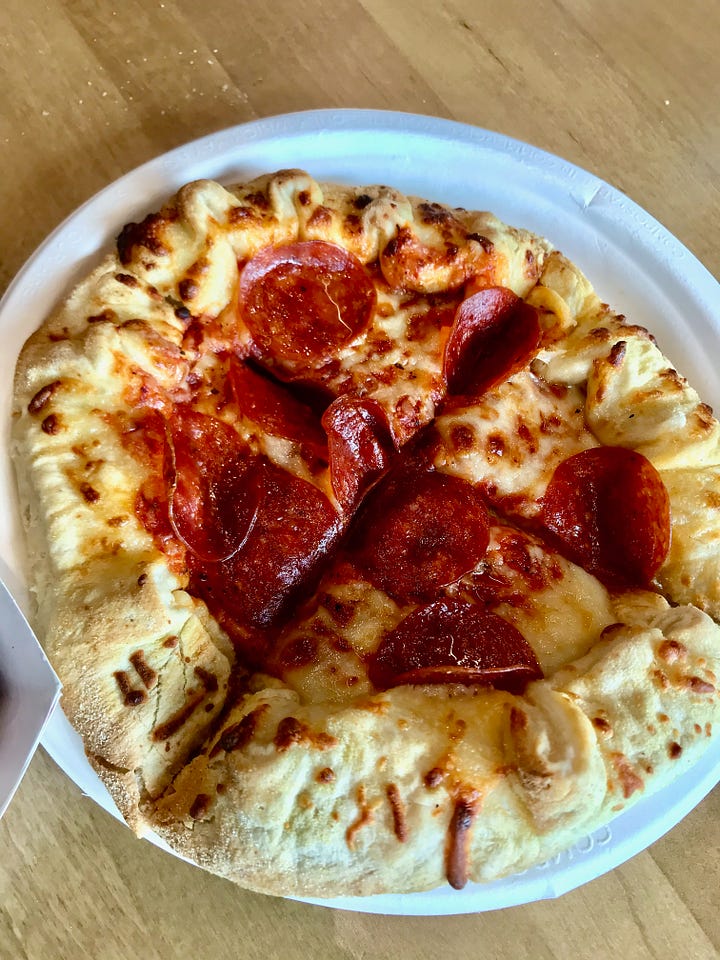


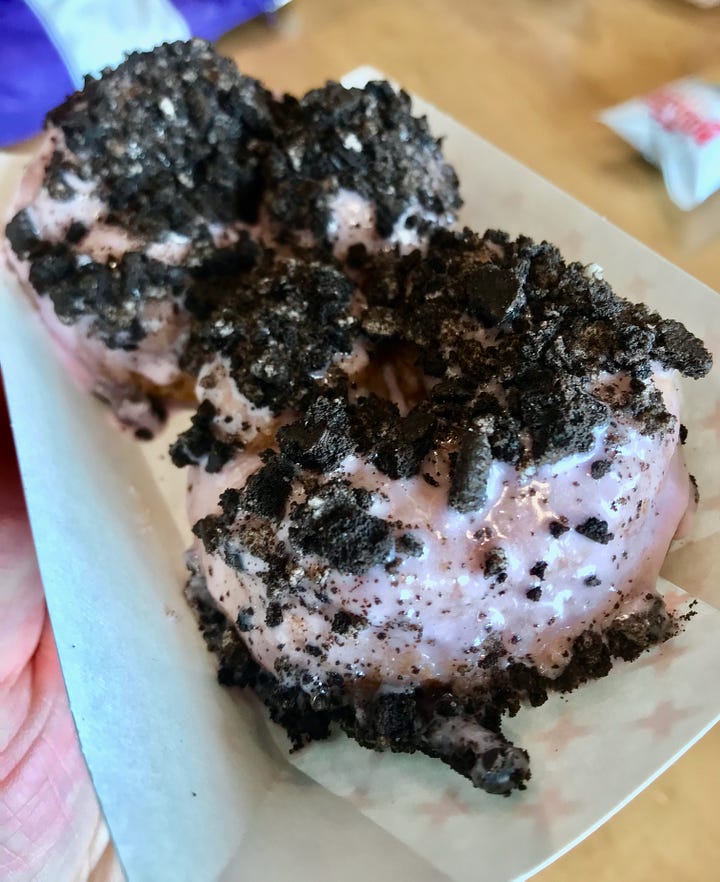
Bites and bits
• Lebowski’s Taproom recently opened at 3240 Centennial Blvd. (most recently a T-Byrd’s location). Yes, it’s based on your favorite cult film. No, it’s the not the first in the world, or U.S, but definitely the only one in this area. They gone all-out on theme decor, including a mounted rug, and there’s an entire menu section devoted to Kahlua drinks. The menu’s a familiar pub mix of wings, tendies, burgers, sandwiches, salads and a couple desserts. A brunch menu ranges from $4 cereal to $17 blackberry jam- and cream cheese-stuffed french toast. I look forward to checking it out soon.
• A Clean Eatz franchise opens Aug. 31 (that’s today, as I’m writing) at 5118 N. Nevada Ave. (in University Village). It’s co-owned by Rhino’s Sports Bar operators Rick and Lori Osmun, and Chris and Heather Spahn; Chris also owns Preferred Document Solutions locally. As the name implies, the eatery’s geared around healthier food options, though the menu still includes “burgerz” and things not a salad. No, I haven’t forgotten how to spell; everywhere you’d expect an “s” for plurality there’s a “z” instead. Chris is even quoted in the press release parroting one of the company’s online slogans: “We change livez.”
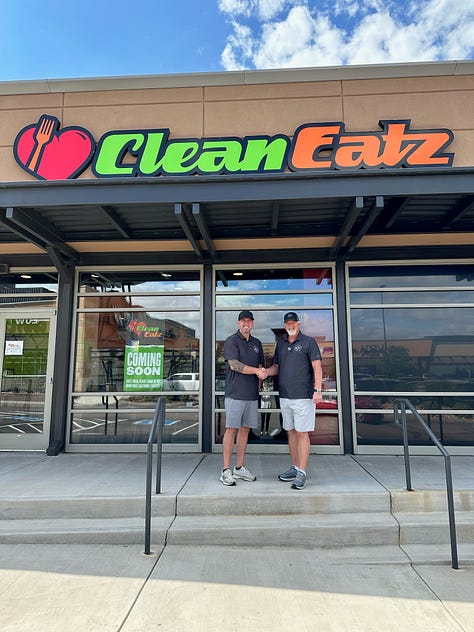
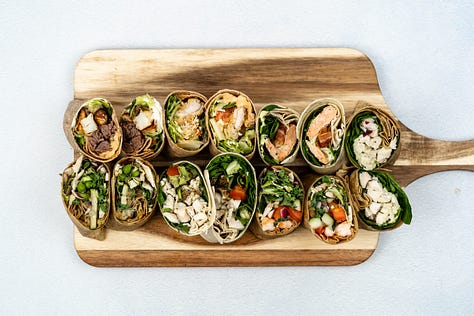
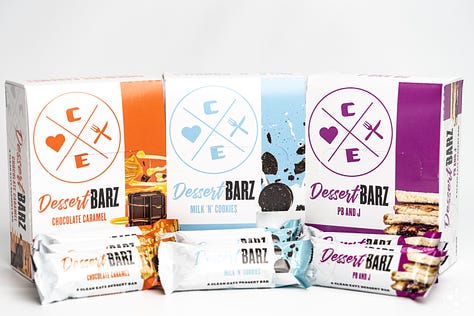
• Pikes Peak Library District is offering a *completely free* five-week Food Industry Training Program that’ll run Oct. 9 through Nov. 10. No prior skills needed. Students will earn a ServSafe Food Handler certification. Submit and applications before Sept. 24. Importantly: “Participants must intend to pursue a career in the culinary industry.”
• Back in June, I noted the arrival of the Michelin Guide in Colorado (finally). Just this week, the first awards were doled out. From Westword, here’s a breakdown titled Michelin Announces Nine Bib Gourmand Restaurants Included in First Colorado Guide. (For the record, I’m woefully behind. I’ve only eaten at Mister Oso off the list. In fairness, I stay focused on the Springs — my beat. Still, I should get to eatin’.)
• Speaking of Denver, and while pilfering Westword content, the publication and writer Molly Martin also noted earlier this month the arrival of a Bobby Burgers via celebrity chef Bobby Flay. (Relatedly, this is a topic that came up in Ep. 1 of my State of Plate podcast, as we discussed big-name chef enterprises skipping over the Springs — just as the Michelin Guide has.)
Use your Allusion
This week’s behind-the-pay-wall review — One ring, two bars — is about the current Lord of the Rings theme at Allusion Speakeasy’s two locations. Just $5 a month buys you paid subscriber status (early review access) if you like what you’ve been reading for free and care to upgrade. (There’s perks.) Paid subscribers also help keep me focused more on my reporting and writing than my (very necessary) fundraising to make this newsletter feasible. To those not at the paid level: For now, You Shall Not Pass! (behind the pay wall). Either way, your tables awaits:
Upcoming events:
• Saturday, Sept. 9: the Palmer Lake Wine Festival.
• Sunday, Sept. 10: Chiba Bar is popping up at Ephemera.
• Saturday, Sept. 16: the 2nd annual Best of the West Wing Fest. (Check out this awesome segment, “Wing Fest Unplucked,” with the event’s creators, on my pals Andrew and Marcus’ COS Business Podcast.)
• Saturday, Sept. 16: Bines & Brews Beer Fest in Monument.
• Monday, Sept. 18: Bar Battle Round 3 at Tipperary Cocktail Parlor. The house bartenders challenge 503W’s crew.
• Stellina Pizza Cafe kicks off its monthly Supper Club Series at 6 p.m., Monday, Sept. 18. Five courses, which include an Aperol Spritz greeting cocktail and gratuity, are $55 per person. (Additional drinks available for purchase.) September’s prix fixe menu features an antipasti starter; butternut squash agnolotti with sage brown butter; mesclun salad with Prosecco vinaigrette; short ribs with gremolata sauce and polenta; and sabayon with hazelnut torte, cherry and dark chocolate.
• Thursday, Sept. 21: Sip with Schnip at The Carter Payne. This month featuring another guest appearance with Distillery 291 — whiskey tastings, limited-release anniversary bottles, plus special cocktail and food menus.
Parting shot
I was happy to head up judging at Pasta in the Park this year: TESSA’s big, annual, foodie fundraiser. Joining me was the Gazette’s Teresa Farney and El Paso County Sheriff Joe Roybal. Thanks to TESSA CEO Anne Markley for the invite and for being a loyal reader and supporter of Side Dish! For those who missed it: You can still support TESSA’s vital community work with a donation in any amount. Even $10 buys activities for one Safehouse family night.
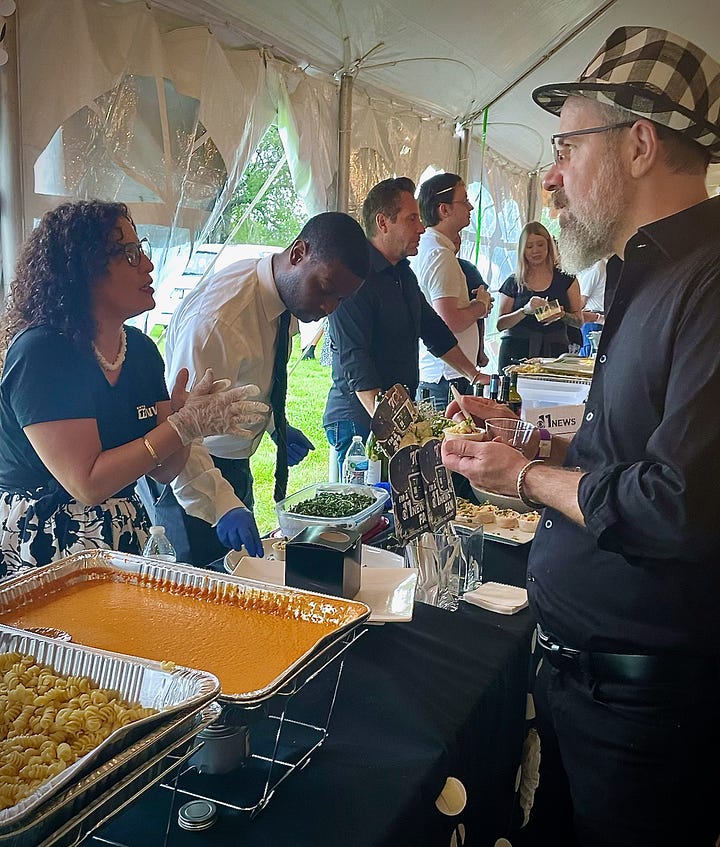


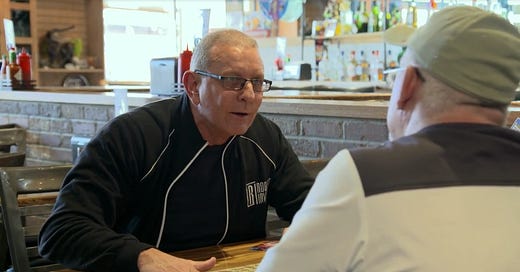


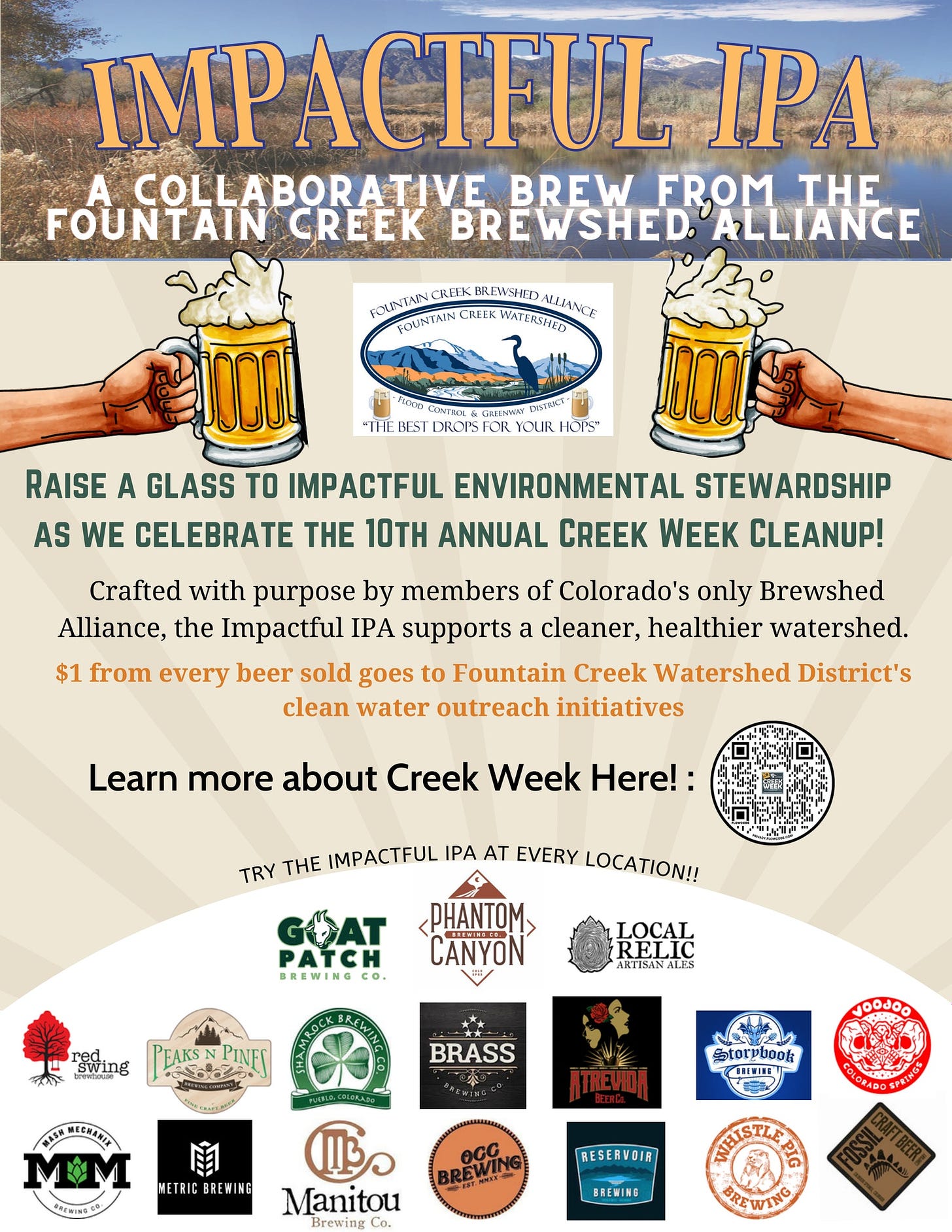

I really enjoyed this interview with Robert Irvine. Great work.
Interview with Robert Irvine informative and interesting. Well thought out questions - hood work Matt.